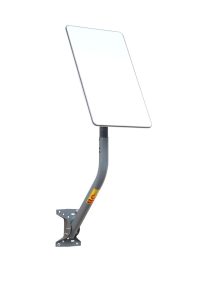LEO Satellites: The Future of Global Connectivity
LEO satellites, or Low Earth Orbit satellites, are revolutionizing the way we communicate and access data. With their ability to provide faster and more reliable connections than traditional satellite systems, LEO satellites are poised to transform the global telecommunications landscape. In this article, we will explore the benefits and advancements of LEO satellite technology, and how it is changing the way we live and work.
LEO satellites are a type of satellite that orbits the Earth at an altitude of around 160 to 2,000 kilometers, which is much lower than traditional geostationary satellites. This lower orbit allows LEO satellites to provide faster data transfer rates and lower latency, making them ideal for applications such as satellite internet, remote sensing, and communications. The use of LEO satellites is becoming increasingly popular, with many companies and organizations launching their own constellations of satellites to provide global coverage.
How LEO Satellites Work
LEO satellites work by using a network of satellites in low Earth orbit to provide coverage to a specific area. Each satellite in the constellation communicates with a network of ground stations, which are responsible for transmitting and receiving data to and from the satellites. The data is then routed to its final destination, whether it be a user’s device or a server. LEO satellites use advanced technology such as phased arrays and digital beamforming to provide high-gain and directional antennas, which enable them to communicate with the ground stations and other satellites in the constellation.
The use of LEO satellites has several advantages over traditional satellite systems. For example, LEO satellites have a lower latency than geostationary satellites, which means that data can be transmitted and received faster. Additionally, LEO satellites are less prone to interference and signal degradation, which can occur when signals have to travel longer distances. LEO satellites also have a higher bandwidth than traditional satellites, which enables them to support more users and provide faster data transfer rates.
Applications of LEO Satellites
LEO satellites have a wide range of applications, from satellite internet and communications to remote sensing and Earth observation. One of the most significant applications of LEO satellites is providing internet access to remote and underserved communities. Many companies, such as SpaceX and OneWeb, are launching constellations of LEO satellites to provide global internet coverage. These satellites will enable people in remote areas to access the internet and communicate with others, which can have a significant impact on their economic and social development.
LEO satellites are also being used for remote sensing and Earth observation. For example, satellites such as Planet Labs’ Dove satellites and DigitalGlobe’s WorldView satellites are used to collect high-resolution images of the Earth’s surface. These images can be used for a variety of applications, such as monitoring crop health, tracking climate change, and responding to natural disasters. LEO satellites can also be used for communications, such as providing connectivity for IoT devices and enabling real-time communication between devices.
Challenges and Future Developments
Despite the many advantages of LEO satellites, there are also several challenges that need to be addressed. One of the biggest challenges is the cost of launching and maintaining a constellation of satellites. Launching a single satellite can cost tens of millions of dollars, and maintaining a constellation of satellites can be even more expensive. Additionally, there are regulatory challenges that need to be addressed, such as ensuring that satellites do not interfere with each other and that they comply with international regulations.
Despite these challenges, the future of LEO satellites looks promising. Many companies and organizations are investing in LEO satellite technology, and new advancements are being made all the time. For example, companies such as SpaceX and Blue Origin are developing reusable launch vehicles, which can significantly reduce the cost of launching satellites. Additionally, new technologies such as phased arrays and digital beamforming are being developed, which can improve the performance and efficiency of LEO satellites.


